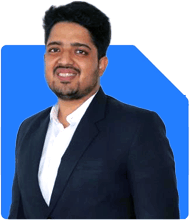Financial Advisor: Should I Continue My Investment Strategy?
Ramalingam Kalirajan |10202 Answers |Ask -Follow
Mutual Funds, Financial Planning Expert - Answered on Feb 07, 2025
He has an MBA in finance from the University of Madras and is a certified financial planner.
He is the director and chief financial planner at Holistic Investment, a Chennai-based firm that offers financial planning and wealth management advice.... more

I have invested 25k each in the following via Lump sum sometime in August and it's return is negative but I am not worried as I always the market works that's how - Quant Multi asset fund direct - 25k (invest 1k since then) Quant large and mid cap direct - 25k (invest 1k since then) Motilal Oswal midcap fund direct - 25k (invest 1k since then) Hdfc dividend yield fund 2k every month. Should I continue to invest 1k as I don't need this money for at least 5 years and add the mentioned amount every month. Please advise. Thank you
Reviewing Your Current Portfolio
Your investments are spread across different fund categories.
Equity markets can be volatile in the short term.
Over five years, equity funds can deliver strong returns.
Continuing SIP Investments
SIP investments reduce risk through cost averaging.
Investing consistently helps in long-term wealth creation.
You should continue your SIPs as planned.
Assessing Fund Selection
Multi-asset funds provide diversification but may have lower returns.
Large and mid-cap funds balance growth and stability.
Mid-cap funds have high growth potential but higher risk.
Dividend yield funds provide stability with lower volatility.
Portfolio Optimization
Too many funds can create overlap.
A balanced mix of large-cap, mid-cap, and multi-asset funds is ideal.
You may consolidate some funds for better performance.
Monitoring and Adjustments
Review your portfolio every year.
Rebalance if any fund consistently underperforms.
Avoid reacting to short-term market movements.
Final Insights
Continue SIPs to benefit from market growth.
Diversify wisely but avoid too many funds.
Review performance yearly and make necessary changes.
Stay invested with a long-term perspective.
Keep emergency funds separate from your investments.
Best Regards,
K. Ramalingam, MBA, CFP,
Chief Financial Planner,
www.holisticinvestment.in
https://www.youtube.com/@HolisticInvestment
You may like to see similar questions and answers below
Omkeshwar Singh | Answer |Ask -Follow
Head, Rank MF - Answered on May 30, 2022
Nikunj Saraf | Answer |Ask -Follow
Mutual Funds Expert - Answered on Apr 19, 2023
Ramalingam Kalirajan |10202 Answers |Ask -Follow
Mutual Funds, Financial Planning Expert - Answered on May 30, 2024
Ramalingam Kalirajan |10202 Answers |Ask -Follow
Mutual Funds, Financial Planning Expert - Answered on May 07, 2024
Ramalingam Kalirajan |10202 Answers |Ask -Follow
Mutual Funds, Financial Planning Expert - Answered on Jun 23, 2025
Nayagam P P |10070 Answers |Ask -Follow
Career Counsellor - Answered on Aug 08, 2025
Nayagam P P |10070 Answers |Ask -Follow
Career Counsellor - Answered on Aug 08, 2025
Ramalingam Kalirajan |10202 Answers |Ask -Follow
Mutual Funds, Financial Planning Expert - Answered on Aug 08, 2025
Ramalingam Kalirajan |10202 Answers |Ask -Follow
Mutual Funds, Financial Planning Expert - Answered on Aug 08, 2025
Ramalingam Kalirajan |10202 Answers |Ask -Follow
Mutual Funds, Financial Planning Expert - Answered on Aug 08, 2025
Ramalingam Kalirajan |10202 Answers |Ask -Follow
Mutual Funds, Financial Planning Expert - Answered on Aug 08, 2025
Nayagam P P |10070 Answers |Ask -Follow
Career Counsellor - Answered on Aug 08, 2025
Radheshyam Zanwar |6216 Answers |Ask -Follow
MHT-CET, IIT-JEE, NEET-UG Expert - Answered on Aug 08, 2025
Radheshyam Zanwar |6216 Answers |Ask -Follow
MHT-CET, IIT-JEE, NEET-UG Expert - Answered on Aug 08, 2025
Radheshyam Zanwar |6216 Answers |Ask -Follow
MHT-CET, IIT-JEE, NEET-UG Expert - Answered on Aug 08, 2025

























